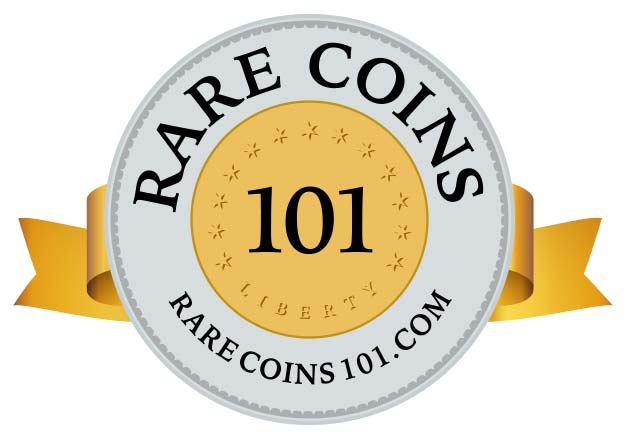1870-CC Seated Liberty Quarter
History books are replete with exploits of the fabulous 1859 Comstock Lode discovery in the Nevada Territory, and to be sure, it was an important factor in the settlement of the American West. Prominent in those rough and tumble times was the development of Carson City.(1)
Founded in 1858 by Abe Curry, only one year prior to Henry Comstock's initial claim, Carson City's growth accelerated dramatically as an important mining town while precious ore, mostly silver, was being uncovered nearby. In 1861, prosperous Carson City became the capital of the Nevada Territory, and remained the seat of state government when Nevada joined the Union in 1864.
Most of the riches were shipped over the Sierra Nevada Mountains to the United States branch mint operating in San Francisco, and then back again after being converted to coinage. This practice was very expensive and risky. Moreover, the population of the Nevada mining district numbered in the tens of thousands, where the scarcity of hard money made routine financial transactions difficult.
Against this set of conditions, Nevada mine owners petitioned Congress for a new branch mint in their vicinity. Legislation to establish a mint in the Nevada Territory was approved on March 3, 1863. Thus began a magnificent American numismatic legacy.
Abe Curry, by now one of the most influential men in entire region, lobbied the government to choose Carson City as the site of the new mint. Curry stressed that since Carson City was conveniently located to the major mining operations, it would be an excellent choice to situate a coining facility. Based on this reasoning, Carson City was ultimately chosen to host the new branch mint.
The cornerstone for the Carson City Mint was laid on September 24, 1866. After many complications in constructing the building, acquiring the necessary machinery, and hiring people, the Carson City Mint opened for coinage operations on January 10, 1870, when Wells Fargo delivered coinage dies from Philadelphia, the first ever bearing the "CC" mintmark.
The production of quarters was not a high priority for the new facility. Only 8,340 quarters were struck at Carson City during its inaugural year, one of the lowest mintages for the entire Seated Liberty quarter series of 1838-1891.(2)
Virtually all the 1870-CC quarters were released into the regional economy of the American West, where they travelled extensively. Few were set aside for collecting purposes. Over time, attrition claimed most of them, leaving present day collectors with a meager 70-85 examples to scramble for, with but a tiny handful in higher grades.
The 1870-CC Seated Liberty quarter is a highly prized rarity, no matter the grade. The allure of owning an artifact of the Carson City Mint, combined with true rarity, have sent prices soaring for many decades. Occasionally, even a coin with a rich numismatic legacy can take a breather, as we have seen over the last few years for the 1870-CC in grades below EF-40. It would be a mistake to assume collectors are losing interest in this incredible coin.
| Estimated survivors in all grades: 75 ?
The survivor estimate is from Rusty Goe in his book The Confident Carson City Coin Collector (2020). |
| PCGS Rarity Scale: 8.2 ?
The 'PCGS CoinFacts Rarity Scale' assesses the relative rarity of all U.S. coins, based on estimated surviving examples. The scale runs from 1.0 to 10.0. The higher the number, the rarer the coin.
Learn more at PCGS. |
| Click HERE to check for availability on eBay** |
Preview of eBay selection (if nothing in Preview, try HERE link just above):
 |
 |
| Trendline Avg = 24.46 | BETTER |
Historic Value Trend Charts:
| Last updated 4-8-25 | Return to Key Date Coin List | |
| Compare to Common Date Coin of Same Type | ||
|
|
||
| Download Charts to Your Computer | ||
Sources
1. Goe, Rusty. The Mint on Carson Street. Reno, NV: Southgate Coins, 2004.
2. Heritage Auctions. 1870-CC 25C. Aug 2021 Auction.
**Many very fine coin dealers sell on eBay. At any point in time, there may be over one million search results for United States coins. This includes quite a few of the recommendations on our Key Date Coin List.
If you’re thinking about purchasing a rare coin, eBay is certainly worth a look. For your convenience, the links from this site to eBay are coded to bring up only coins certified by PCGS and NGC.
As is always, always the case, never buy a valuable coin from a seller whose trustworthiness cannot be verified. Learn more about this at our chapter Best Places to Buy Coins, which also has a section on doing business on eBay.
In the interest of full disclosure, Rare Coins 101 receives a small commission anytime someone connects to eBay from this site and purchases something.
Coin images by Stack's Bowers Galleries.


